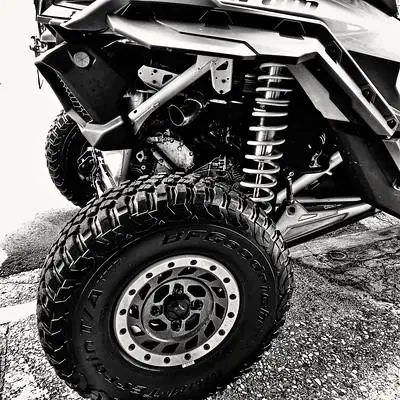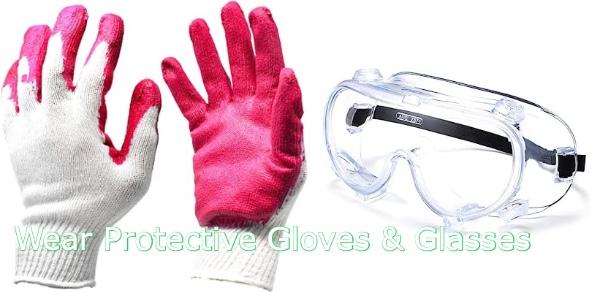If you have a car with old suspension parts, the best thing to do is replace them. Oftentimes, worn-out suspension parts can cause your car to ride roughly and unevenly. Additionally, worn-out suspension parts can increase the wear and tear on your car’s other components, which can lead to costly repairs in the future.
There are a few things you can do with old suspension parts from cars. You can either recycle them, sell them to a junkyard, or use them for other projects.
You can recycle your old car parts in all sorts of creative ways. For instance, you could make a table lamp with old shock absorbers by using an interesting design idea.
If you choose to sell them to a junkyard, they may be interested in buying all or part of the suspension. Just be sure to remove any personal information from the parts before selling them.
Recycling is the best option because it helps reduce the amount of waste that goes into landfills. It also saves energy and resources that would otherwise be used to create new suspension parts.
Types Of Suspension Parts

There are a variety of suspension parts that can be used in vehicles, including leaf springs, coil springs, torsion bars, air springs, and shock and strut assemblies.
Leaf Springs: A leaf spring is a simple machine that uses a series of metal leaves to absorb shock and keep a vehicle stable. When the vehicle goes over a bump, the leaves compress and store energy. This energy is then released as the vehicle goes over the next bump, which helps to smooth out the ride.
Coil Springs: Coil springs work by compressing and expanding as they are loaded and unloaded. This expansion and compression create a force that resists the motion of the spring, which in turn helps to keep your car or truck in place when you’re driving on bumpy roads.
Torsion Bars: Basically, torsion bars work by using a twisting or torsional force to provide resistance against compression and tension forces. This allows the suspension system to be more responsive and durable, while also providing a smoother ride. Torsion bars are also often used in place of coil springs, as they can provide more consistent performance and handling across a wider range of terrain.
Air Springs: Air springs work by compressing air to create a cushion between the vehicle and the ground. This helps to absorb shocks and decrease vibration, which makes for a smoother, more comfortable ride. Additionally, air springs can help to improve steering and braking response by keeping the tires in better contact with the ground.
Shock And Strut: Shock absorbers work by dissipating the energy of the bouncing car, while struts do not have a damping function, they simply resist compression and rebound forces.
What to Do With Old Suspension Parts?
If you don’t want to recycle them, then take them to a certified disposal company. Some companies will take old suspension parts and dispose of them in an environmentally friendly way.
Not only is it illegal to dispose of them in a way that could harm the environment, but it’s also unsafe for people and animals.
When it comes to getting rid of old car parts, make sure you go with a reputable company that will recycle them safely and responsibly. That way, you can rest assured knowing that your old parts won’t end up harming the planet or anyone else.
Recycle Them
Depending on the type of suspension part, there are a few different ways to recycle it.
Metal suspension parts can often be recycled and melted down to create new metal parts. Rubber suspension parts can be recycled and turned into new rubber products. And for plastic suspension parts, can often be recycled and turned into new plastic products.
Leaf Springs: Leaf springs can be recycled by breaking them down into smaller pieces using a hammer and chisel. The metal can then be melted down and reused.
Coil Springs: Coil springs can be broken down into their component parts and recycled. Steel can be melted down and reused, while copper and other metals can be extracted and sold. Rubber and plastic can be recycled or incinerated for energy. Recycling coil springs help conserve resources and reduce pollution.
It also can be used as a beautiful, rustic holiday candle holder. Another option is to repurpose it into a unique garden decoration or even use it as the base for a bird feeder. If you’re feeling crafty, you could also try your hand at making some jewelry with metal wire and the spring.
Torsion Bars: You could try selling them online or at a local swap meet, or you could take them to a scrap metal dealer.
Air Springs: Air springs can be recycled by breaking them down into their component parts. The rubber can be ground up and used in new products, while the metal can be melted down and reused. Recycling air springs is a great way to reduce landfill waste and help conserve resources.
Shocks And Struts: You can make a beautiful lamp. Here is how:
- Remove the old shock and struts from your car.
- Disassemble them and remove the springs, wires, and any other metal pieces.
- Clean all of the parts with soap and water.
- Use a power drill to create a hole in the top of each strut large enough for a light socket to fit through.
- Cut a piece of fabric large enough to cover the top of each strut, and sew it in place around the edge.
- Insert a light socket into each drilled hole, then attach a light bulb to each socket.
- Plug in your new lamps and enjoy!
Dispose of Them
It’s important to dispose of your old suspension parts properly. Many companies will take them for recycling, but it’s best to take them to a reputable company that specializes in the disposal of car parts. Not only is this the responsible thing to do, but it also helps keep dangerous toxins and pollutants out of our environment.
How to Dispose Of Old Suspension Parts
When it’s time to say goodbye to an old suspension fork or shock, it’s important to do so in a safe and responsible way. The following steps will show you how to properly dispose of an old damper.

- Before you start, it’s important to wear protective glasses. You don’t want metal or other debris getting in your eyes.
- Wear protective gloves
- Clamp the damper in a vise, with the piston rod always pointing down. This will help keep oil from leaking out.
- Remove the air valve cap and slowly release all the air from the damper.
- Disconnect the hydraulic lines from the body of the damper.
- Cut off the hoses as close to the body of the damper as possible using a sharp blade.
- Separate the damping rod from the spring coil using
- Pump the oil out and catch it in a suitable vessel.
- Remove the brake lines, pads, and calipers.
- Disconnect the sway bar links, end links, and shocks.
- Label each part as you remove it – this will make reassembly much easier.
FAQ
Can suspensions be repaired?
As of now, there is no real way to repair a suspension that has been damaged. While some companies are working on developing a way to do so, it is still in the research phase and no official repairs have been made available to the public as of yet.
Can I reuse shocks?
No, shocks cannot be reused in cars. Each time a shock is used, it dissipates a certain amount of energy. If shocks are repeatedly used, they will eventually lose their ability to provide the desired level of bounce and comfort. Shocks should only be used once and then replaced and it is recommended to replace them in pairs.
Should I keep my old struts?
It depends. If your old struts are still in good condition, then you can probably keep them. However, if they’re worn out or damaged, then you’ll need to replace them.
Final Words
The old beat-up shocks, struts, leaf springs, and coil springs you have in your car can be transformed into something truly amazing with just a little bit of crafty knowledge. It takes a lot of creativity and passion to create something useful from your unusable items. However, If you have old suspension parts that are no longer needed, it is important to follow all safety precautions.
More resources:


